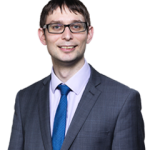

Richard Eite
Regulatory Engineer
Unmanned Aircraft, also referred to as “Unmanned Aeronautical Vehicles” (UAVs) or drones, have the potential to boost the UK economy alone by up to GBP 42 billion, and provide a wide range of applications. From hobbyist roots less than 20 years ago, technology has transformed the size and capabilities of these aircrafts. From a government perspective, applications include the delivering of medical supplies, search and rescue, reconnaissance, as well as military defence. On the commercial side, applications include last-mile telecommunications connectivity to remote areas, surveillance, construction engineering, farming and direct-to-home delivery services.
Given the range of applications and technology available, the corresponding requirements are equally broad to allow for a harmonised regulatory framework. Regulations are required to address user identification, aviation safety and the need for securing control and communication links from interference or malicious cyber-attack. Although the level of requirements will vary depending on the size and capability of the device, in this article we consider examples of the current basic user regulations applicable to UAVs in the UK, Germany and USA, as well as EU Directives.
In the UK, the CAA issues licences for individual users of drones. All users are prohibited from operating within 50m of other people and must be at least 2.5km from the perimeter of an airfield. Users must identify their drone and pass a test to obtain a licence, to ensure operators are able to fly responsibly and prevent harm. The aircraft should not exceed a height of 400 foot above the ground and must remain within visible line of sight.
In Germany, according to Deutsche Flugsicherung, users are permitted to operate a small drone (less than 250g weight) without a permit, if the aircraft remains below a height of 100m, except in controlled aerospace, where the limit is 50m. Remote pilots must maintain a direct line of sight with the aircraft, and may not operate within 1.5km of an airport. All drone operations should avoid conservation areas and crowded locations.
As part of the European Aviation strategy, the EU directives require that UAS operations are fully licenced and subject to electronic registration. The Directive provides a guide for individual EU countries to develop their own national frameworks, but inevitable variations in regulations will lead to operational uncertainty and extra burden when transporting or operating UAVs across borders.
In the USA, drones are regulated under the jurisdiction of the FAA. There are two categories of service: recreational and commercial. Recreational use is restricted to a mass of 25 kgs (55lbs), operation within visual line-of-sight, an operational ceiling of 400 feet and speeds of less than 100mph. Any user, for commercial or recreational purposes, must pass the FAA administered “Aeronautical Knowledge Test” and participate in control training. Commercial users are required to undergo additional training to obtain licences to operate more advanced devices.
It could be argued that that the ICAO, the international aviation body, may be best-placed to initiate regulatory harmonisation of this sector. Without harmonisation – at a regional level, or internationally – it is likely that markets will be fragmented, resulting in stunted sector growth and unrealised potential of the UAVs. An international regulatory framework must be developed to harness the potential of this new industry and ensure that the needs of all users, from local delivery companies to larger multinationals, are fully and safely met.
